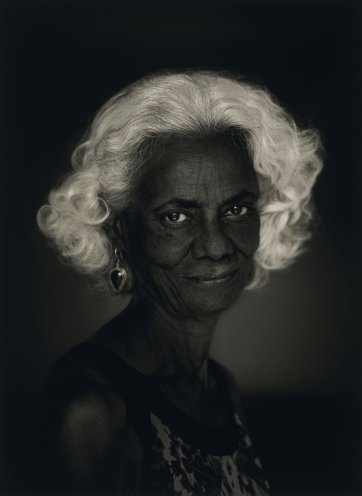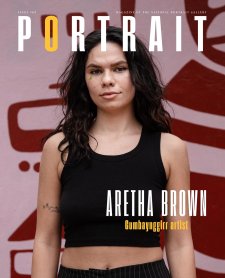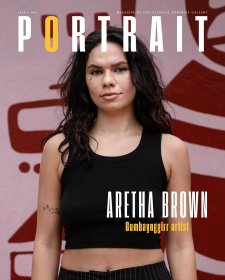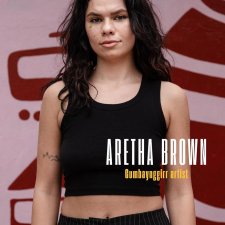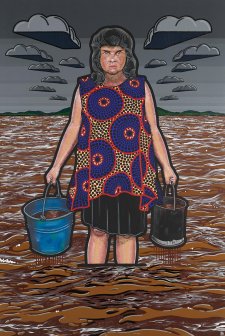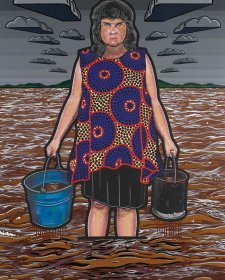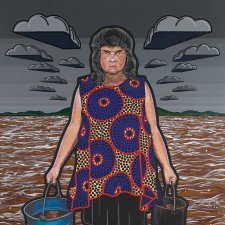Photographed 35 years apart, these two portraits offer both a timeline of, and thematic thread for, Maria (Polly) Cutmore’s life – from a young woman to a respected Gomeroi Elder. Cutmore is a direct descendent of the Weraerai clan of the Gomeroi, who were the victims of the Waterloo Creek and Myall Creek massacres that occurred southwest of Moree, New South Wales during 1837–38. A fierce activist fighting tirelessly for justice and wellbeing for her community, and the preservation of Gomeroi land, water and sacred sites, Cutmore frequently voices her concerns for Country. She has spearheaded a number of campaigns regarding the lack of water, the impact of gas mining and the acknowledgement and meaningful recognition of the 1837–38 massacres. Cutmore is Michael Riley’s first cousin and the subject of many of Riley’s first attempts at photography. She grew up in Moree, and Riley in Dubbo, but they were as close as siblings all their lives. In Riley’s 1986 photograph Cutmore wears a necklace that belonged to her partner at the time, David Prosser (who was the sitter in Riley’s last series, They call me niigarr 1995).
Jessica Hromas took the 2021 portrait of Cutmore on the back verandah of her home in South Moree, noting: ‘This photo is a celebration of everything Polly is, there is weighty history behind it all, Australia’s modern history with its dirty secrets and then of course the immense Australian Aboriginal history and culture that is Polly’s heritage.’
In a March 2023 interview with the ABC’s Lani Oataway, Cutmore shared her thoughts about the photographs. ‘We were trying to find our way into the world after leaving Moree as teenagers. I look quite serious, but you know, it was also a journey of learning who we were as adults … And the second [portrait], I think it shows the journey I’ve been on. And it has been a struggle, but I can say it’s been a wonderful struggle. It also shows the beauty of the life that we had – that we can come through strong-looking, and as survivors.’
